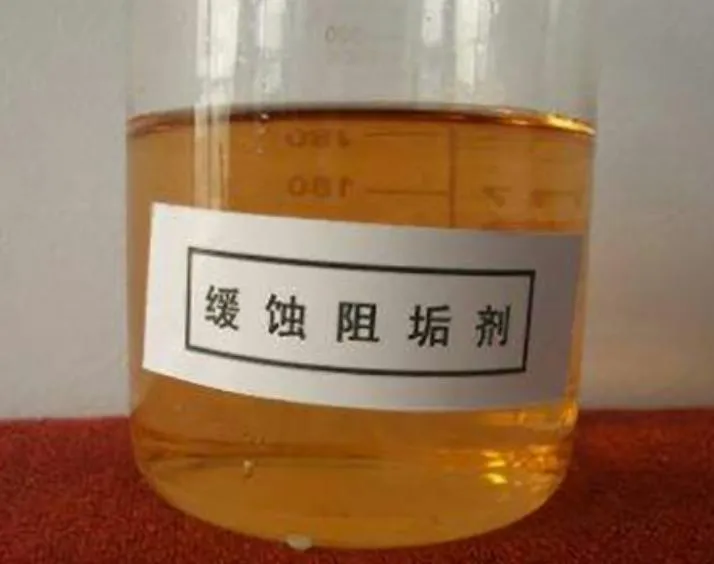Scale and Corrosion Inhibitors: Essential Chemicals for Industrial Water System Protection
In industrial water systems—cooling towers, boilers, heat exchangers, pipelines, and RO systems—two silent threats can cause serious damage over time: scale formation and corrosion. These issues reduce operational efficiency, increase energy consumption, and lead to costly shutdowns. The solution? A reliable スケールと腐食防止剤 program tailored to your system and water quality.
From power plants and refineries to food processing and HVAC facilities, the use of scale and corrosion inhibitor chemicals is critical for maintaining equipment longevity and system performance. Whether you’re treating make-up water, recirculating cooling water, or boiler feedwater, understanding the role and variety of corrosion scale inhibitor solutions can help you avoid damage and reduce operational costs.

What Is a Scale and Corrosion Inhibitor?
A スケールと腐食防止剤 is a chemical additive used in water treatment to control mineral scaling and corrosion inside piping and system surfaces. These chemicals work by:
Preventing scale: Inhibiting the precipitation and crystal growth of minerals like calcium carbonate, calcium sulfate, or silica.
Controlling corrosion: Creating a protective film on metal surfaces or neutralizing corrosive ions (e.g., oxygen, chlorides).
Most systems require a combination of these effects since scale buildup and corrosion often occur simultaneously, particularly in high-temperature or high-pressure environments.
How Do Scale and Corrosion Inhibitor Chemicals Work?
The mechanisms of action depend on the chemical formulation, but the general principles are:
Scale Control Mechanisms:
Threshold inhibition: Preventing scale formation at supersaturated conditions.
Crystal distortion: Modifying crystal structure to prevent adherence to surfaces.
Chelation: Binding with metal ions (Ca²⁺, Mg²⁺, etc.) to keep them in solution.
Dispersion: Keeping particles suspended to avoid buildup.
Corrosion Control Mechanisms:
Film formation: Creating a passivating layer on metal surfaces to block oxygen and moisture.
Cathodic/anodic inhibition: Interrupting the electrochemical reactions that drive corrosion.
pH adjustment and oxygen scavenging: Removing corrosive species like dissolved oxygen or acid gases.
Common Types of Scale and Corrosion Inhibitor Chemicals
Modern scale and corrosion inhibitor chemicals are often blends that contain a combination of agents. Some of the most widely used chemicals include:
1. Phosphonates
Effective in both scale and corrosion control.
Excellent thermal stability.
Examples: HEDP, ATMP, PBTC.
2. Polycarboxylates
Good for dispersing hardness salts and stabilizing metal ions.
Often used with phosphonates for synergy.
3. Zinc Salts
Inhibit corrosion by forming a barrier film.
Common in alkaline cooling systems.
4. Molybdates
Act as anodic corrosion inhibitors.
Often used in closed-loop or low-flow systems.
5. Nitrites and Borates
Used in closed-loop HVAC and industrial systems.
Help form passive oxide layers on steel.
6. Organic Azoles
Specifically protect copper and copper alloys.
Examples: Benzotriazole (BTA), Tolytriazole (TTA).
Each corrosion scale inhibitor is chosen based on system metallurgy, water chemistry, temperature, and flow dynamics.
Key Applications of Scale and Corrosion Inhibitors
Cooling Water Systems (open-loop or recirculating)
Steam Boilers and Feedwater Systems
Reverse Osmosis (RO) Pretreatment
Geothermal and District Energy Systems
Oil & Gas Pipelines and Process Water
HVAC Systems and Closed Chillers
In each application, inhibitors help maintain system cleanliness, prevent heat transfer loss, and reduce the need for descaling or chemical cleaning.
Choosing the Right Corrosion Scale Inhibitor
When selecting a corrosion scale inhibitor, consider:
System type (open, closed, pressurized, high-temp)
Water source (city, well, river, recycled)
Water chemistry (hardness, pH, conductivity, TDS)
Material composition (carbon steel, copper, stainless steel, aluminum)
Regulatory requirements (e.g., discharge limits, food contact approval)
Work with a professional water treatment provider or スケールと腐食防止剤 supplier who can run lab testing (e.g., LSI or Ryznar index) and make data-driven recommendations.
Environmental and Regulatory Trends
Phosphorus limits: Many regions are enforcing stricter phosphorus discharge standards, pushing demand for phosphate-free or low-phosphonate products.
Green chemistry: Biodegradable and non-toxic corrosion inhibitors are on the rise.
Automation: Dosing systems are now integrated with real-time monitoring to optimize chemical use and reduce waste.
Scale and Corrosion Inhibitor FAQs
Q1: What’s the difference between scale and corrosion?
A: Scale is the buildup of mineral deposits (usually from calcium or magnesium), while corrosion is the gradual destruction of metal due to chemical reactions with water and oxygen. Both damage equipment, but in different ways.
Q2: Can I use a single product for both scale and corrosion?
A: Yes. Many modern formulations are blended to handle both, especially in cooling systems. However, specific systems may still benefit from separate treatments depending on severity.
Q3: How often should I dose scale and corrosion inhibitor chemicals?
A: Dosing frequency depends on system volume, water turnover, and real-time monitoring. Many systems use continuous dosing with automated controllers.
Q4: Are these inhibitors safe for the environment?
A: Some are biodegradable or low-toxicity, but many traditional inhibitors (like phosphonates or molybdates) can be problematic in wastewater. Always check local discharge guidelines.
Q5: Where can I find reliable suppliers of corrosion scale inhibitors?
A: Look for established chemical distributors or water treatment companies that offer technical support, documentation (TDS, SDS), and product customization.
-
Understanding Polycarboxylic Acids: Properties, Applications, and Future PotentialニュースJul.28,2025
-
Scale Inhibitor Explained: How to Protect Your System from Limescale and Hard Water DamageニュースJul.28,2025
-
Scale and Corrosion Inhibitors: Essential Chemicals for Industrial Water System ProtectionニュースJul.28,2025
-
Polyaspartic Acid: A Biodegradable Polymer for Sustainable ChemistryニュースJul.28,2025
-
Isothiazolinones: A Versatile Antimicrobial Class with Industrial Power and Regulatory ChallengesニュースJul.28,2025
-
A Deep Dive into 2-Phosphonobutane-1,2,4-Tricarboxylic Acid (PBTC)ニュースJul.28,2025





